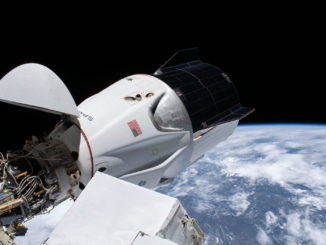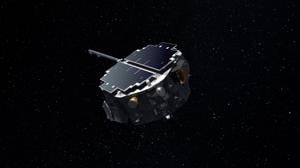Science
SpaceX Successfully Launches X-37B Spaceplane for Key Tests

A SpaceX Falcon 9 rocket launched from NASA’s Kennedy Space Center in Florida shortly before midnight on August 21, 2025, carrying the X-37B Orbital Test Vehicle on its eighth mission. The United States Space Force (USSF) confirmed the successful separation of the spacecraft approximately two hours after liftoff, marking a significant milestone for military space operations.
William Blauser, acting director of the Air Force Rapid Capabilities Office, stated, “OTV-8 exemplifies the X-37B’s status as the U.S. Space Force’s premier test platform for the critical space technologies of tomorrow.” The mission aims to demonstrate advanced technologies, including laser communications and quantum navigation, which are expected to enhance the capabilities of military satellites.
The Falcon 9 rocket lifted off from Launch Complex 39A at 23:50 EDT (03:50 UTC on August 22) and approximately 8.5 minutes later, the first stage booster, tail number 1092, landed successfully at Cape Canaveral Space Force Station, producing a sonic boom as it touched down.
Mission Overview and Objectives
The X-37B program, operational since April 2010, is shrouded in secrecy, with many details about its missions remaining classified. However, USSF officials highlighted two major demonstrations for this flight. The first involves a high-bandwidth laser communication system designed to interact with commercial satellite networks in low Earth orbit. This technology allows for greater data transmission speeds and improved security compared to traditional radio frequency communications.
General Chance Saltzman, Chief of Space Operations, emphasized the importance of the laser communications demonstration, stating, “OTV-8’s laser communications demonstration will mark an important step in the U.S. Space Force’s ability to leverage proliferated space networks as part of a diversified and redundant space architecture.”
The second key feature of this mission is the quantum inertial sensor, which will allow the X-37B to navigate without GPS. This technology is particularly valuable in environments where GPS signals are unreliable or unavailable, such as deep space or certain military operations.
Col. Ramsey Horn, commander of Space Delta 9, remarked on the significance of the quantum inertial sensor, noting, “Whether navigating beyond Earth-based orbits in cislunar space or operating in GPS-denied environments, quantum inertial sensing allows for robust navigation capabilities when GPS navigation is not possible.”
Historical Context and Future Implications
The X-37B program consists of two operational spaceplanes, with OTV-8 being the fourth flight of X-37B vehicle 1. The launch follows a previous mission that concluded on March 7, 2025, when another X-37B vehicle successfully landed at Vandenberg Space Force Base after 909 days in orbit. The history of the program includes multiple missions with varying durations, showcasing the evolving capabilities of this unique spaceplane.
As the USSF continues to explore advanced technologies through the X-37B program, the outcomes of the OTV-8 mission could have far-reaching implications for military and commercial satellite operations. The integration of laser communication and quantum navigation may redefine how space operations are conducted, enhancing resilience and adaptability in an increasingly complex space environment.
The X-37B’s current mission duration in low Earth orbit remains unspecified, but its continued development represents a vital step forward in the United States’ strategic capabilities in space.
-

 Technology5 months ago
Technology5 months agoDiscover the Top 10 Calorie Counting Apps of 2025
-

 Health2 months ago
Health2 months agoBella Hadid Shares Health Update After Treatment for Lyme Disease
-

 Health3 months ago
Health3 months agoErin Bates Shares Recovery Update Following Sepsis Complications
-

 Technology4 months ago
Technology4 months agoDiscover How to Reverse Image Search Using ChatGPT Effortlessly
-

 Technology1 month ago
Technology1 month agoDiscover 2025’s Top GPUs for Exceptional 4K Gaming Performance
-

 Technology2 months ago
Technology2 months agoElectric Moto Influencer Surronster Arrested in Tijuana
-

 Technology5 months ago
Technology5 months agoMeta Initiates $60B AI Data Center Expansion, Starting in Ohio
-

 Technology5 months ago
Technology5 months agoRecovering a Suspended TikTok Account: A Step-by-Step Guide
-

 Health4 months ago
Health4 months agoTested: Rab Firewall Mountain Jacket Survives Harsh Conditions
-

 Lifestyle5 months ago
Lifestyle5 months agoBelton Family Reunites After Daughter Survives Hill Country Floods
-

 Technology4 months ago
Technology4 months agoHarmonic Launches AI Chatbot App to Transform Mathematical Reasoning
-

 Technology3 months ago
Technology3 months agoUncovering the Top Five Most Challenging Motorcycles to Ride





















